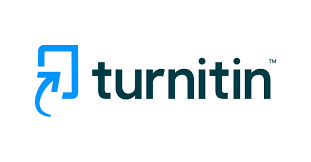The Refining Capability of Palm Shell Activated Carbon for Waste Cooking Oil
Abstract
The high level of consumption of cooking oil will have an impact on increasing the waste of cooking oil produced. Using the waste of cooking oil needed purification, including through the adsorption process using activated carbon. This research aimed to study the ability of palm kernel shell activated carbon (PKSAC-AC260) compared to standard activated carbon (DAC or Decolorized Activated Charcoal by Sigma-Aldrich) in refining waste cooking oil at various concentrations of activated carbon. The results showed that the type of activated carbon influenced color, free fatty acid content, peroxide value, and saponification value of purified waste cooking oil, but had no effect on water content, saponification value and iodine value. Activated carbon between PKSAC-AC260 and DAC with a concentration of 2.5% was able to improve the quality of the best waste cooking oil. Purification of used cooking oil using PKSAC-AC260 and DAC was able to increase the color brightness of waste cooking oil (∆E) by 5.44 and 4.53, reduce the free fatty acid content of waste cooking oil from 1.47% to 0.79% and 0.61%, reduce the peroxide value of waste cooking oil from 163.47 meq/kg to 116.40 meq/kg and 98.82 meq/kg, and increase the saponification value of waste cooking oil from 155.22 mg/g to 180.48 mg/g and 184.48 mg/g, respectively. The ability of PKSAC-AC260 to purify waste cooking oil is lower than that of DAC. The quality of processed oil from waste cooking oil does not meet the quality standards of cooking oil based on SNI 3741: 2013.
Full Text:
PDFReferences
Anonim, 2004. Official Methods and Recommended Practices of AOCS. 5th ed. American Oil Chemist’ Society, . United State of America.
Anonim, 2013. Standar Nasional Indonesia SNI 3741:2013 Minyak Goreng. Badan Standardisasi Nasional, Jakarta.
Anonim, 2017. Official Methods and Recommended Practices of AOCS. 7th ed. American Oil Chemist’ Society, . United State of America.
Deshmukh, R.K., 2019. The effect of repeatedly cooking oils on health and wealth of a country: A Short communication. Journal of Food Processing and Technology. 10: 1-4. DOI: 10.35248/2157-7110.19.10.807.
Gomez, K.A., Gomez, A.A., 1984. Statistical Procedures for Agricultural Research. First Ed., John Wiley & Sons, Inc., Canada.
Hui, Y.H., 1996. Bailey’s Industrial Oil and fat Products. 5th ed. Vol. 2, John Wiley & Saons, Inc., New York.
Kamilah, H., Azmi, M.A., & Yang, T.A., 2015. Knowledge, Attitude and Perception towards the Consumption of Waste Cooking Oil between Suburban and Rural Communities. International Journal on Advanced Science Engineering Information Technology. International Journal on Advanced Science Engineering Information Technology. 5: 3017-310.
Karabulut, L., Topcu, A., Akmil-Basar,C., Onal, Y., Lampi, A.M., 2008. Obtaining butter oil triacylglycerols free from β-carotene and α-tocopherol via activated carbon adsorption and alumina-column chromatography treatments. Journal of the American Oil Chemists’ Society. 85, 213-219.
Ketaren. S., 2008. Pengantar Teknologi Minyak dan Lemak Pangan. UIPress, Jakarta.
Lubis, R.A.F., Nasution, H.I., Zubir, M., 2020. Production of Activated Carbon from Natural Sources for Water Purification. Indonesian Journal of Chemical Science and Technology (IJCST-UNIMED), 03: 67-73.
Manurung, M., Suaniti, N.M., & Putra, K.G.D., 2018. Perubahan kualitas minyak goreng akibat lamanya pemanasan. Jurnal Kimia, 12: 59 –64.
Megawati. M., & Muhartono, 2019. Konsumsi Minyak Jelantah dan Pengaruhnya terhadap Kesehatan. Majority. 8: 259 – 264.
Oko, S., Mustafa, Kurniawan, A., & Muslimin, N.A., 2020. Pemurnian minyak jelantah dengan metode adsorbsi menggunakan arang aktif dari serbuk gergaji kayu ulin (Eusideroxylon zwageri). Jurnal Riset Teknologi Industri, 14: 124 – 132.
Ulfah, M., Raharjo, S., Hastuti, P., Darmadji, P., 2016. The potential of palm kernel shells activated carbon as an adsorbent for β-carotene recovery from crude palm oil. AIP Conference Proceedings. 1755, 130016-1 - 130016-5
Ulfah, M., Raharjo, S., Hastuti, P., Darmadji, P., 2017. Adsorption of β-carotene in isopropyl alcohol with decolorized activated carbon as model for β-carotene adsorption in crude palm oil. Indones. J. Chem., 7, 105 – 112.
Ulfah, M., Raharjo, S., Hastuti, P., Darmadji, P., 2019. The influence of textural and chemical properties of palm kernel shell activated carbon on the adsorption capacity and desorption efficiency of β-carotene in a model system. International Food Research Journal 26, 345 – 353.
Yanti, R.N., Hambali, Pari. G., & Suryanti, A., 2017. The characteristics of palm oil plantation solid biomass wastes as raw material for bio oil. IOP Conf. Series: Earth and Environmental Science 141 (2018) 012038 doi :10.1088/1755-1315/141/1/012038, ICBBogor 2017, IOP Publishing.
DOI: http://dx.doi.org/10.33512/fsj.v5i1.16644
Refbacks
- There are currently no refbacks.

This work is licensed under a Creative Commons Attribution-ShareAlike 4.0 International License.











